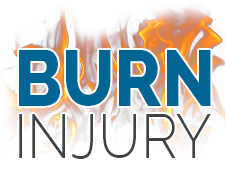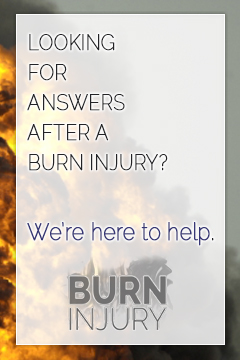What Is Third Degree Burn
A third degree burn involves all layers of the skin. In some cases, third degree burn may penetrate into the patient’s fat, muscle, and bone. Some classification systems label severe third degree burns as fourth degree burns. Third degree burn patients should receive emergency medical attention as soon as possible. Many third degree burn patients experience lifelong complications, such as scarring, disfigurement, or loss of movement in the burned area.
Third Degree Burn Symptoms
Third degree burns typically display similar symptoms based on the severity of the burn. The most recognizable symptoms occur in the skin and surface of the affected area. The skin may appear dry and leathery, and may also peel. The skin’s color may change to white, yellow, or red. If the skin is charred, it may appear brown or black. In some cases, it may be difficult to determine what is third degree burn.
Pain Symptoms
Often, third degree burn victims will feel little pain or a complete lack of pain or other sensation in the burned area. This occurs because the nerve endings in the burned skin are destroyed. Pain symptoms in third degree burns differ from first and second degree burns, which are typically very painful.
Third Degree Burn Complications
Third degree burn complications can be life-threatening. Burn patients may experience hypovolemia, or low blood volume due to blood vessel damage. Hypothermia, or dangerously low body temperature, may also occur. During the healing process, infection is one of the most common complications of third degree burn. In cases of severe infection, the patient may develop sepsis. Sepsis can lead to shock and organ failure.
Burn Shock
The patient may enter a state of shock immediately after the injury occurs. During shock, the body’s vital tissues and organs fail to receive adequate blood flow. If the patient is not stabilized, shock can lead to system failure and death.
Airways Burn
An airways burn occurs when the burn victim inhales substances such as smoke, toxic fumes, steam, or superheated air. Airways burns most often occur in third degree burn victims involved in a fire. Often, airways burns can cause the throat to become swollen. This can lead to life-threatening difficulty with breathing. As soon as a burn victim is removed from the heat source, the airways should be checked to ensure that they remained open and that breathing is not obstructed.
Airways Burn Symptoms
Symptoms of an airways burn may include:
- Burned lips and charred mouth
- Difficulty breathing, wheezing, or coughing
- Head, neck, or face burns
- Change in voice
- Dark-colored mucous, caused by carbon staining
- Singed eyebrows or nose hairs
Sources:
Bhat, Satyanarayan, and Stephen Milner. “Antimicrobial Peptides in Burns and Wounds.” Current Protein & Peptide Science 8.5 (2007): 506-520. MEDLINE with Full Text. Web. 25 Dec. 2013.
Gokdemir, Mehmet Tahir, et al. “Clinical Outcome of Patients with Severe Burns Presenting to the Emergency Department.” Journal of Current Surgery. 2.1 (2012): 17-23. Print.
Kwak, Hee Y, and Ji I Kim. “Pulse Oximetry-Induced Third-Degree Burn in Recovery Room.” ANZ Journal of Surgery 79.4 (2009): 307-308. MEDLINE with Full Text. Web. 25 Dec. 2013.
Rowley-Conwy, Gabby. “Infection prevention and treatment in patients with major burn injuries.” Nursing Standard 25.7 (2010): 51+. Academic OneFile. Web. 25 Dec. 2013.













